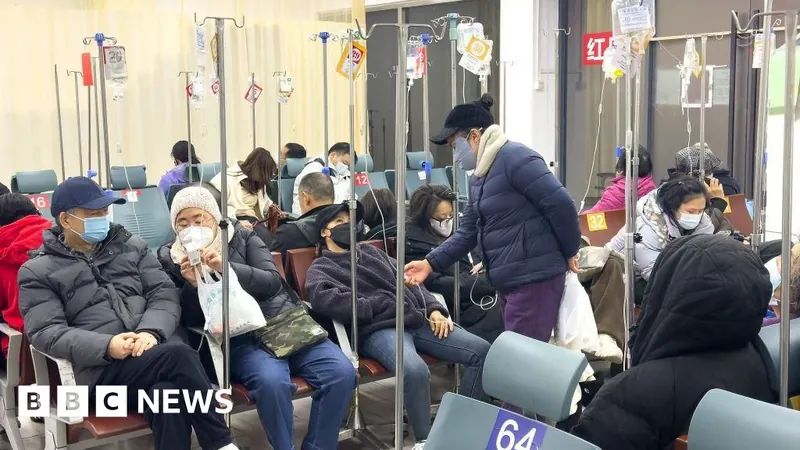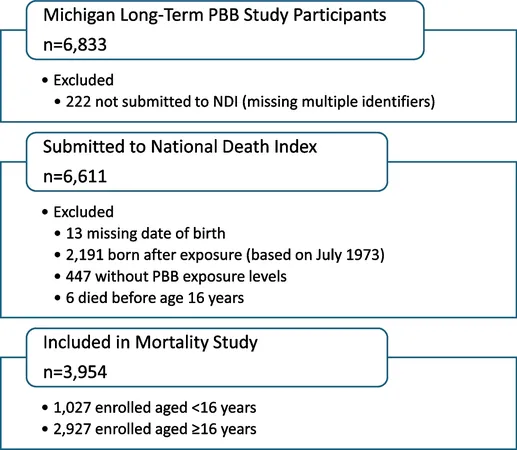
HMPV Surge in China: What You Need to Know About Human Metapneumovirus
2025-01-07
Author: Charlotte
In recent weeks, alarming images of overcrowded hospitals in China, filled with masked individuals, have spread across social media platforms, reigniting fears of a potential new pandemic. Prompted by these scenes, Chinese health authorities have confirmed a notable increase in cases of human metapneumovirus (HMPV), particularly among children. This uptick is believed to be linked to the seasonal variations typical for this period.
While the mention of a virus may evoke memories of Covid-19, health experts are quick to clarify that HMPV is not comparable. Identified in the Netherlands in 2001, this virus has been present in the human population for many years, affecting nearly all children by the age of five. Notably, most infections are mild and can easily be confused with flu symptoms.
Understanding HMPV and Its Transmission
HMPV typically leads to upper respiratory tract infections that are mild for the majority of the population. It spreads primarily through direct contact with infected individuals or by touching surfaces that have been contaminated with the virus. Common symptoms include cough, fever, and nasal congestion.
However, certain groups, especially very young children (those under two years old) and individuals with compromised immune systems, are at an increased risk for severe health issues. According to Dr. Hsu Li Yang, an infectious diseases expert in Singapore, a small number of compromised patients could experience more significant respiratory distress that necessitates hospitalization.
Seasonal Surge Linked to Cold Weather
The rise in HMPV cases in China coincides with typical respiratory infection patterns seen during late winters and springs, a trend that is mirrored across many countries in the Northern Hemisphere, including the United States and the United Kingdom. Experts attribute this seasonal surge to lower temperatures, which facilitate the virus’s survival and spread in tightly packed indoor settings.
Dr. Jacqueline Stephens, an epidemiologist at Flinders University in Australia, emphasizes that while the increase is alarming, it aligns with seasonal patterns and does not signify a new global threat. Health authorities in the U.S. and U.K. have also reported rising HMPV cases since October, pointing to a common seasonal pattern rather than an emerging epidemic.
Is HMPV a Cause for Alarm?
Experts categorically dismiss the notion of HMPV as a potential pandemic threat akin to Covid-19. According to Dr. Hsu, pandemics typically arise from novel pathogens, and HMPV does not fit that profile. It is widely disseminated globally, and most individuals possess a degree of immunity from prior exposures. Professor Paul Hunter from the University of East Anglia adds that it is normal for children to encounter HMPV at least once by their fifth birthday, often leading to recurrent infections throughout life.
While the situation does not seem dire, standard precautions are advisable, especially for those at heightened risk of severe illness. These measures include wearing masks in crowded places, practicing good hand hygiene, and avoiding congested areas when possible.
In conclusion, while the rise of HMPV in China understandably raises concerns, public health experts reaffirm that it does not bear the hallmarks of an impending pandemic, urging calm and preparedness instead of panic.









 Brasil (PT)
Brasil (PT)
 Canada (EN)
Canada (EN)
 Chile (ES)
Chile (ES)
 Česko (CS)
Česko (CS)
 대한민국 (KO)
대한민국 (KO)
 España (ES)
España (ES)
 France (FR)
France (FR)
 Hong Kong (EN)
Hong Kong (EN)
 Italia (IT)
Italia (IT)
 日本 (JA)
日本 (JA)
 Magyarország (HU)
Magyarország (HU)
 Norge (NO)
Norge (NO)
 Polska (PL)
Polska (PL)
 Schweiz (DE)
Schweiz (DE)
 Singapore (EN)
Singapore (EN)
 Sverige (SV)
Sverige (SV)
 Suomi (FI)
Suomi (FI)
 Türkiye (TR)
Türkiye (TR)
 الإمارات العربية المتحدة (AR)
الإمارات العربية المتحدة (AR)